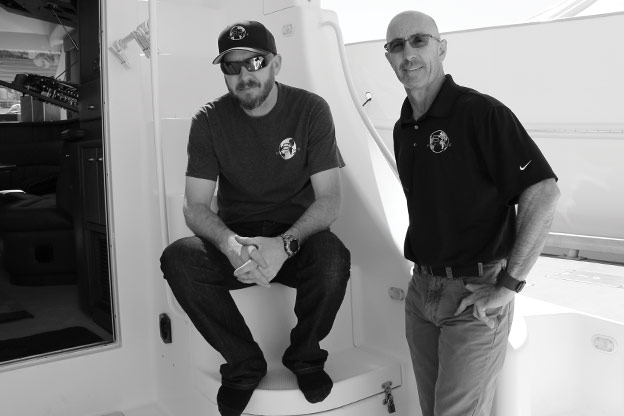 “Water, water, everywhere,
“Water, water, everywhere,
And all the boards did shrink,
Water, water, everywhere,
Nor any drop to drink.”
—Samuel Taylor Coleridge,
The Rime of the Ancient Mariner
T he vessels we sail may be different than those of Samuel Taylor Coleridge’s day, but we mariners aboard get thirsty just the same. Many of us don’t think about the water supply too much as we head out for a day of boating, but the calculus is very different for cruisers with weeks or months of adventure ahead.
Fortunately for everyone, the 2016 market is flush with modern, efficient, reliable watermakers to choose from, but selecting and installing one is no small task. When one refers to a modern watermaker installation, one is really talking about integrating a whole new vessel system. Additionally, every boat and crew has different water consumption demands. The skipper of a 40-foot sailboat with an average crew of four may insist on a unit with minimal electrical demands, while a 60-foot luxury motoryacht that caters to multiple families may be less concerned with amps and in need of more serious freshwater output.
Watermakers, like just about everything related to boats, requires expertise to understand, and we at Northwest Yachting are here to help. Knowledge is power, after all. We visited Ryan Parker and Paul Zimmer, co-owners of S3 Maritime, for this edition of Ask the Experts at their waterfront office and shop for some insider tips on the world of watermakers.
Q: What should one look for in a good watermaker? Surely there are a few things that set units apart?
Parker: The number one thing is making sure they are using quality products. Make sure they have good fittings, a good hose, good pumps, good motors. There’s a lot of stuff out there, and a lot of people are trying to reinvent
the wheel.
Zimmer: It doesn’t necessarily need to be that way.
Parker: A good service network is a must. Good dealer network for that brand.
Zimmer: Yep, that’s important.
Parker: If they are the only guy selling you parts and you decide to take your boat to Mexico…good luck. You aren’t going to get support, or that support is a day or two away versus having a dealer that is somewhere in Mexico for someone’s who’s got a good dealer network. Parker Hannifin has a worldwide dealer network just about anywhere there are multiple dealers or multiple repair centers. Obviously, you get out to some remote islands or some places in Alaska, it’s hard to find a guy. It might not be in your town, but there’s a guy in your state. So that helps.
Zimmer: You also want a unit you can work on.
Parker: Yeah! A lot of guys are coming out with energy recovery pumps and all these fancy whizbang cool things, but some of the stuff you gotta keep it simple, right? Make it so that the guy that’s stuck with his boat somewhere on an island can actually pull it apart and fix it, or a tech can easily do it who’s not aware of the newest, latest, greatest technology. He might not be a watermaker expert, but he may have worked on boats and understands pumps and can actually tear it apart and fix it.
Zimmer: With a little mechanical aptitude and a manual and some spare parts.
Parker: Yeah, definitely a good manual. If they can’t give you a good manual, then I wouldn’t buy it. That’s with anything these days though. If they can’t provide you with good explode drawings, good wiring diagrams, stuff like that, I’d stay as far away from it as I can because that means they didn’t do the engineering up front. They threw it together and they tried to get it out there to market, but there’s no backside of the company. The expensive part that sucks that they aren’t making money on what didn’t get done.
Q: So, steam is just about history. Does reverse osmosis rules the roost for the average consumer?
Parker: Yeah. Everybody’s gone reverse osmosis with the exception of some of the really big boats. There are still some cruise ships out there that are steam. They use big boilers to boil the water. It has to do with the amount that you can create in a day and space requirements, but most of them are now going reverse osmosis.
Q: Let’s talk maintenance. Is there a monthly regimen you have to do? Yearly?
Parker: If you got a watermaker that isn’t automated, you definitely want to flush it at least every two weeks to keep the membranes wet. That’s probably your biggest cost. If you don’t do it membranes run…$700 apiece, something like that?
Zimmer: It’s normally $600 apiece, I would say.
Parker: Letting the boat sit for a month can destroy your membranes. That’s probably the biggest thing. Obviously, filters, you’ve got pre-filters in line that are building sediment, krill, and plankton. I recommend changing your high-pressure oil annually. Most people don’t.
Zimmer: Definitely change out that pressure pump oil.
Parker: It doesn’t take very long. If you’re not going to use the boat for the winter, you’re going to want to pickle the membranes. It’s just a solution that gets run through and basically preserves the membrane in life through the off season.